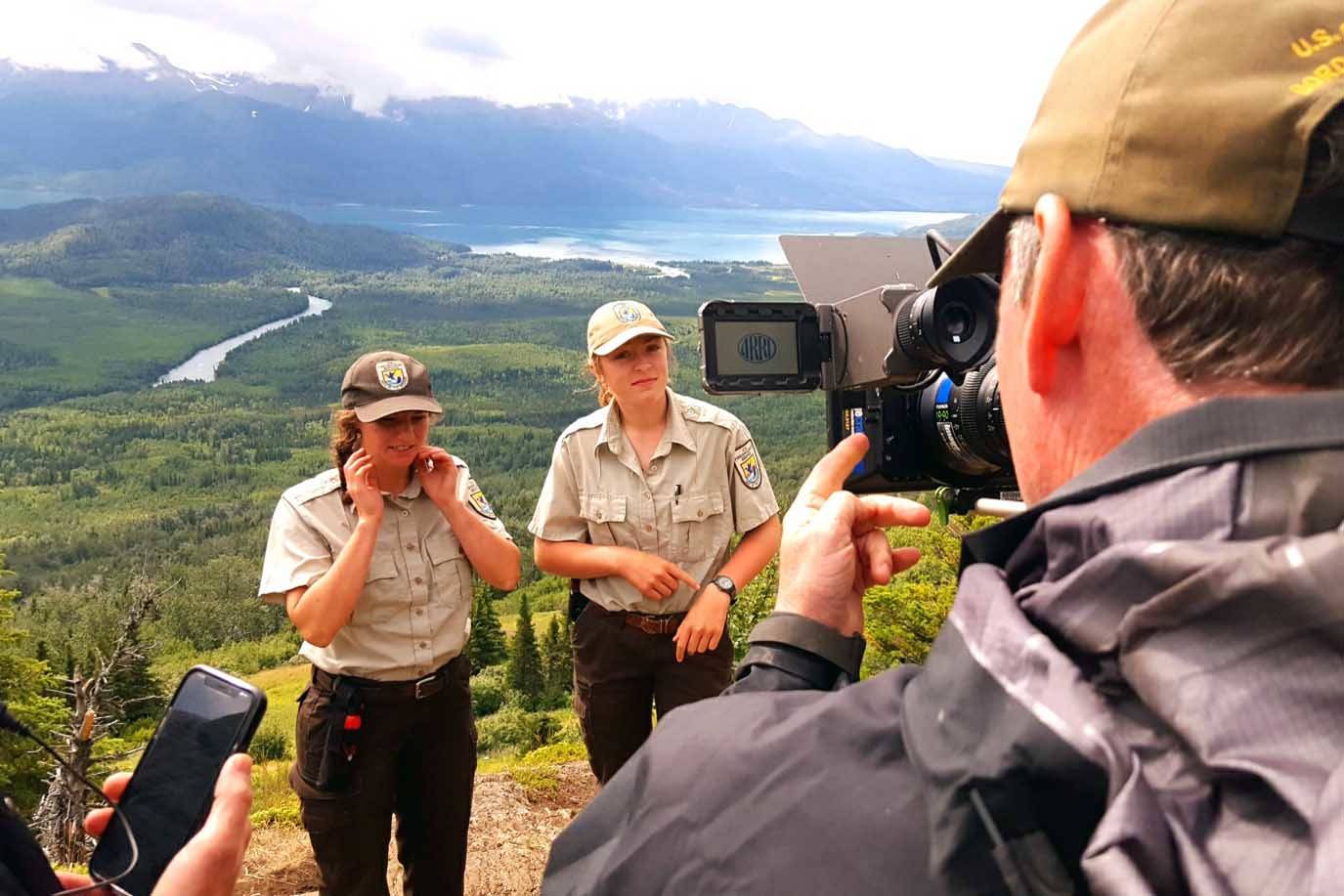By ANDY LORANGER
Another year in the books on the Kenai National Wildlife Refuge – is it me or does every year seem to pass more quickly than the last? I do remember my parents telling me this would happen when I was “their age,” and how I’d be trying to put the brakes on the passing time.
Somehow that didn’t seem possible as a kid who was always thinking, “I can’t wait until I’m old enough to. …” Of course, as with most parental wisdom and advice, Mom and Dad were spot on.
As 2018 draws to a close, looking back on some highlights of work completed on the refuge helps me to slow the clock just a little. We hope our visitors enjoy the new trailhead and facilities at the now officially open Marsh Lake Trail on Skilak Lake Road, the improvements to the Moose Range Meadows boardwalks and fishing platforms on the Kenai River, the miles of maintained backcountry trails and several newly repaired public use cabins.
Monitoring of refuge wildlife populations and habitats by our biologists in 2018 included capturing and radio collaring mountain goats in the Kenai Mountains, and conducting research to document how plant and animal communities are responding to rapid climate change. Substantial progress was made on eradicating Elodea from the Kenai Peninsula, an invasive plant that threatens salmon habitats and other aquatic resources.
Work to reduce risks to people, homes and property from wildland fires continued, with eight more miles of mechanical treatments to create fuel breaks along the eastern and northern borders of Sterling. As always, much of the refuge’s work was accomplished through partnerships with numerous agencies and community organizations, and through the contributions of many citizen volunteers who selflessly share their time, energy and expertise.
This year also brought a unique opportunity to showcase the Kenai refuge, its remarkable scenic beauty and fish and wildlife resources, and many aspects of the work our staff, partners and volunteers conduct during the summer months to conserve these resources and serve visitors through Animal Planet’s new television series “Into Alaska.” The show’s initial season also highlighted the Kodiak National Wildlife Refuge and its equally spectacular natural beauty, featuring bear biologist Bill Leacock and his research on Kodiak’s iconic brown bears.
To my knowledge, this foray into commercial television was a first for the U.S. Fish and Wildlife Service, and it’s safe to say that we here at the refuge had a whole lot to learn about what goes into making a TV show. The experts patiently guided us along, and now audiences throughout the U.S. and internationally can experience these special places so familiar to us from their living rooms through the magic of television.
The show also provides a peek into the work being done on national wildlife refuges on a daily basis to ensure that future generations will enjoy and benefit from Alaska’s healthy fish and wildlife populations and wild places.
One very special aspect of “Into Alaska” was the show’s featuring of three student interns, Laura Bashor and Amber Robbins here on Kenai refuge, and Dustin Rose on Kodiak refuge. All three are college students who spent the summer working with USFWS biologists on a variety of fish and wildlife research and monitoring projects, following in the footsteps of the hundreds of youth and young adults who have served in similar roles on these refuges over the years.
The series provides the unique insights of these young people seeing the refuges and some of Alaska’s amazing fish and wildlife resources for the first time as they assist with biological field work. It is obvious that these experiences deepened their curiosity about the natural world as they consider possible career paths.
What is most inspiring is their new resolve and confidence to pursue those dreams. Their reactions are a great reminder of just how fortunate we are to be Alaskans and live and work in one the last truly wild places on earth.
Laura, Amber and Dustin’s perspectives also remind us of the importance of mentoring, as they often express their appreciation for senior staff who provide guidance and encouragement throughout the summer. Their thoughts brought back fond memories of the mentors in my life, both personal and professional, how fortunate I’ve been to have them, and how so much of what they taught has stuck with me through the years.
Reflecting on all this makes me certain that taking time to enjoy and appreciate the many gifts of wild Alaska and being a mentor to a younger colleague, friend or family member are also both wonderful and rewarding ways to slow down its all too quick passage.
From the entire Kenai refuge staff, best wishes to all of you for a very happy and healthy 2019.
Andy Loranger is the Refuge Manager of Kenai National Wildlife Refuge. Find more Refuge Notebook articles (1999-present) at https://www.fws.gov/Refuge/Kenai/community/Refuge_notebook.html.
Find more information about the refuge at http://www.fws.gov/kenai or http://www.facebook.com/kenainationalwildliferefuge

